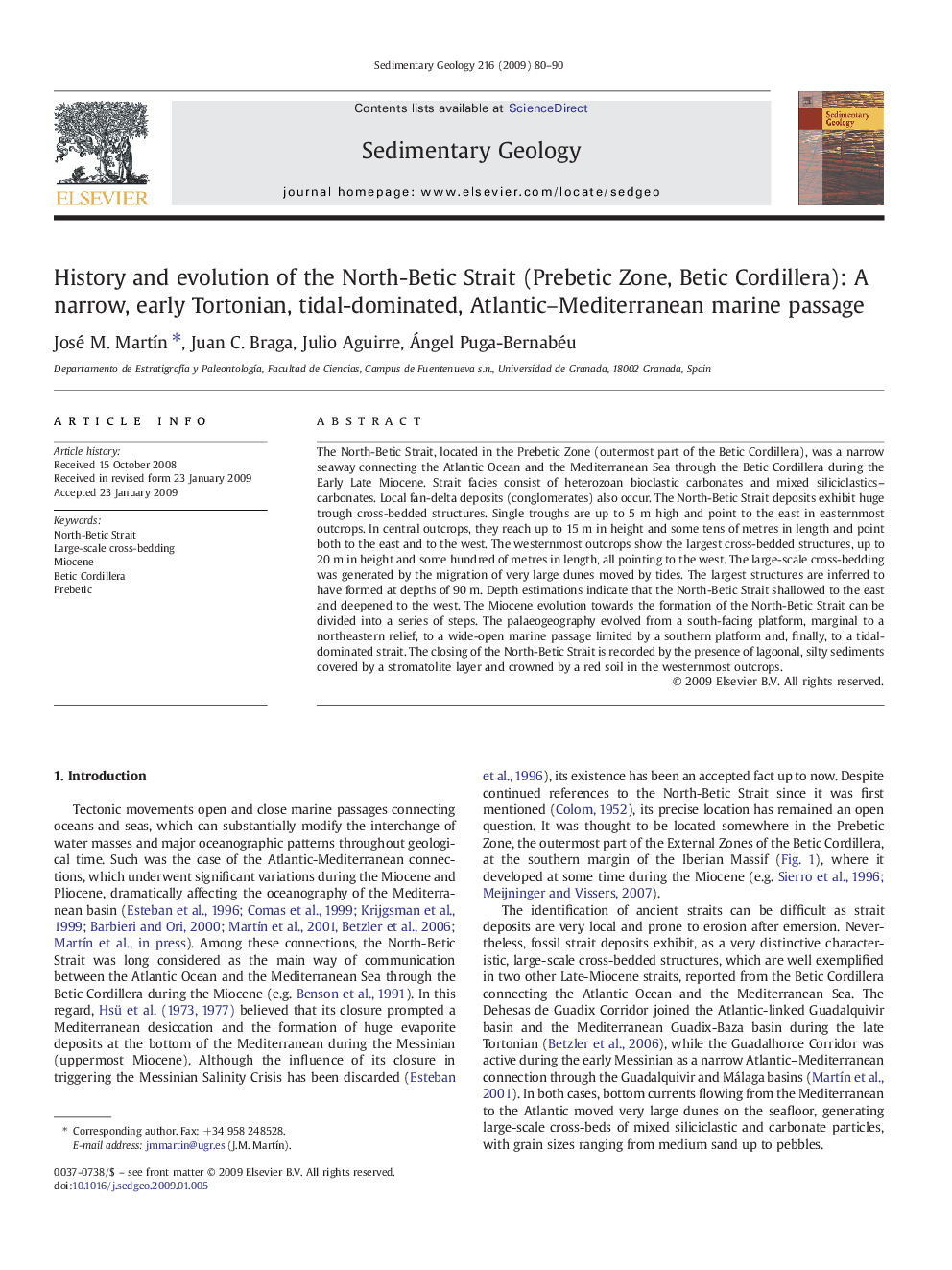| Article ID | Journal | Published Year | Pages | File Type |
|---|---|---|---|---|
| 4690477 | Sedimentary Geology | 2009 | 11 Pages |
The North-Betic Strait, located in the Prebetic Zone (outermost part of the Betic Cordillera), was a narrow seaway connecting the Atlantic Ocean and the Mediterranean Sea through the Betic Cordillera during the Early Late Miocene. Strait facies consist of heterozoan bioclastic carbonates and mixed siliciclastics–carbonates. Local fan-delta deposits (conglomerates) also occur. The North-Betic Strait deposits exhibit huge trough cross-bedded structures. Single troughs are up to 5 m high and point to the east in easternmost outcrops. In central outcrops, they reach up to 15 m in height and some tens of metres in length and point both to the east and to the west. The westernmost outcrops show the largest cross-bedded structures, up to 20 m in height and some hundred of metres in length, all pointing to the west. The large-scale cross-bedding was generated by the migration of very large dunes moved by tides. The largest structures are inferred to have formed at depths of 90 m. Depth estimations indicate that the North-Betic Strait shallowed to the east and deepened to the west. The Miocene evolution towards the formation of the North-Betic Strait can be divided into a series of steps. The palaeogeography evolved from a south-facing platform, marginal to a northeastern relief, to a wide-open marine passage limited by a southern platform and, finally, to a tidal-dominated strait. The closing of the North-Betic Strait is recorded by the presence of lagoonal, silty sediments covered by a stromatolite layer and crowned by a red soil in the westernmost outcrops.
